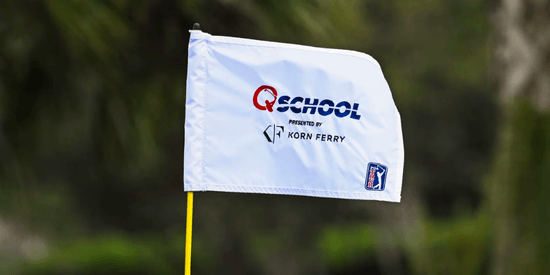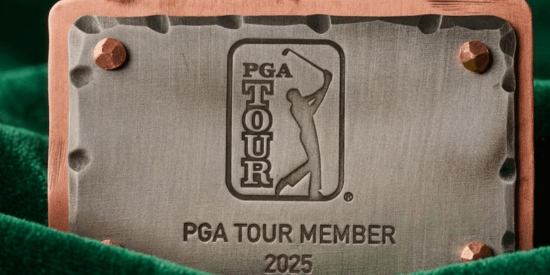Titleist 816H1 and 816H2 Hybrids: A Player Staff Review
1/2/2015 | by AmateurGolf.com Staff
see also: Equipment Reviews

AGC Player Staff member David Ober got the chance to try the new Titleist 816 H1 and H2 Hybrids and is ready to put a couple in his bag
When you’re a golfer and the UPS truck shows up, there’s always a sense of anticipation. Last week, though, I was even more excited than usual. I knew what was coming—the new Titleist 816H1 and 816H2 hybrids for me to test and review —but to understand my heightened excitement, you have to know just how much I love hybrids.
I’ve been playing hybrids since they first became popular way back in the 1990s. My first set were the old Ben Hogan Edge CFT hybrids with the steel Apex 4 shafts. Man did I love those clubs. I loved them so much, in fact, that I played three or four of them way before anyone was doing that. I carried a 5-hybrid long before most players carried a 2-hybrid! Nowadays, with my advancing age (I’m 48) and declining club head speed (100 mph with the driver), I have even added a 6- hybrid to my bag.
Why do I play so many hybrids? Because I’m a late-releasing, hands-ahead, high- spinning low ball hitter—exactly the kind of golfer that benefits most from hybrids. Hybrids are designed to get the ball in the air more easily than their iron counterparts. They accomplish this by combining a larger head with a lower center of gravity that is also further back from the face. The head shape of most hybrids can also promote cleaner less “grabby” turf interaction and improved playability out of the rough due to their softer edges and rounder overall profile.
So why all the back story if I’m here to write a review of the new Titleist hybrids? Because Hybrids have changed over the years. Gone are the days when hybrids were high-flying spin machines with weak, torquey shafts. Today’s hybrids are lean, mean, spin-reducing machines that launch the ball lower and hotter than ever before. If you’ve shied away from adding a 3-hybrid, or even a 4-hybrid to your bag, it may be time to consider one—especially if your club head speed ain’t quite what is used to be…
REVIEW
Titleist bills the 816 hybrids this way:
816H1 – High-launching
hybrids that fly farther and land soft. (lofts of 19*,
21*, 23* 25*, 27*)
816H2 – Compact hybrids for
iron-like control with more distance (lofts of 19*,
21*,
23*, 25*)
The clubs that I received were as follows:
816H1 21* with the
Diamana
S+ Blue 70 HY shaft in stiff flex
816H2 21* with the Diamana D+
White 90 HY shaft in x-flex
I did most of my testing with the softer Blue shaft, since that is my preference.
Here what Titleist says about the 816H hybrids, in general:
CLAIM: Relieved Sole Edges help the clubs glide through the turf.
VERDICT:
TRUE
One of the first things I noticed about these clubs
was how much cleaner they interacted with the turf
compared to hybrids I have tested. Definitely a big
win for Titleist here.
CLAIM: Active Recoil Channel™, Thin Face, High MOI generate high speed and low spin for long distance, and the ultra thin face delivers speed and distance across the entire hitting area. High MOI design delivers speed on off-center hits. The hybrids provide more speed, higher launch and a steeper landing angle versus long irons to help you stop the ball closer to the pin
VERDICT: TRUE
Both hybrids are plenty long and quite
forgiving (meaning that off-center hits go relatively
straight and relatively far).They accomplish this with
a
launch angle that is neither too high nor too low, but
“just right.” I believe these clubs are
designed to go quite straight, and they certainly win
on that count. The ball just seems to fly straight off
these things, even if you are trying to
“work” the ball (more on that later).
CLAIM: Precision Fit offers two models, loft choices every 2 degrees, and a new 1 degree SureFit hosel adjustment for loft and lie for the most precise fit and yardage gaps we’ve ever offered.
VERDICT: MOSTLY TRUE
The adjustments are simple and seem plenty
accurate. The only thing I would change is their
coding
system. Having to think, “Wait, is C4 upright
and weak? Or flat and weak? Or flat and strong?
” when you forgot your little booklet can be a
bit of a pain—especially if your phone battery is
dead
and you have no internet access. Then you have to
ask someone at the range if they have their book or
if they have internet access so that you can check
the codes.
Here’s what Titleist says about the individual clubs:
-- H1 PLAYER BENEFITS --
Large, confidence-inspiring profile for golfers that need enhanced launch
VERDICT: TRUE
The H1 does hit the ball slightly higher and softer
than the H2. I prefer my hybrids to launch the ball
high, because I’m a low-ball hitter. The H1
hits the ball high, but not too high.
Outstanding performance from the rough
VERDICT: TRUE
Both clubs excel equally from the rough,
but that’s because they’re next generation hybrids.
Like the Geico commercial "It’s what they
do."
-- H2 PLAYER BENEFITS --
Compact Profile for launch and trajectory control
VERDICT: TRUE
The H2’s more compact head does seem to
give a bit more workability than the H1, but not
much. Both clubs hit low to mid-launch darts.
 |
The Titleist
816
H2 (left) shows a bit more grass picked up on the
sole
than the H2 (right), but both clubs offer excellent
turf
interaction |
Slight offset for more aggressive players that engage the turf
VERDICT: OPEN FOR
DISCUSSION
I’m not really sure what Titleist means here. I
am definitely an “aggressive player that
engages the turf” (I take divots with my
hybrids), but didn’t notice any real difference
in turf interaction between the two clubs. They both
seemed to interact cleanly, and certainly more
cleanly
than previous Titleist models. Perhaps players who
tend to sweep more will notice a bit more of a
difference.
FINAL VERDICT: WINNERS
Both of these hybrids are great at doing
what they tell you they will do. They are plenty long,
plenty forgiving, confidence inspiring, easy to
adjust,
and just all-around solid clubs. What they lack in
workability, they make up for in consistency. I do
think that if I substitute a different shaft with a
softer, more lively tip section that I might get more
workability in these clubs, but that’s just
nitpicking. These hybrids are as good as any
I’ve ever hit, and if I can find the right shaft for
my game to put in them, I wouldn’t be
surprised at all if I was playing these great sticks in
my next qualifier…
Most Popular Articles

2025 PGA TOUR Q-School Guide: Sites, Scores, and Who Advanced
Dec 5, 2025Second Stage is complete and Final Stage awaits at Sawgrass — follow every Q-School leaderboard and the players still chasing
2025 LPGA TOUR Q-Series: Final Qualifying Stage FINAL SCORING
Dec 8, 2025Helen Briem earns medalist honors, 31 players headed to the LPGA next year
2025 PGA TOUR Q-School Final Stage: Ewart Leads Five New TOUR Card Winners
Dec 14, 2025A.J. Ewart topped Final Stage at TPC Sawgrass, leading five players who secured PGA TOUR membership for 2026.
Australian Open at Royal Melbourne: Preview, amateur bios, and how to watch
Nov 30, 2025Rory McIlroy headlines one of the championship's top fields in years - at least four amateurs will have their chance at gloryInside Gil Hanse’s Restoration of Baltusrol’s Upper Course: A Return to Tillinghast’s
Dec 11, 2025Renowned architect Gil Hanse reveals how he brought Baltusrol’s Upper Course back to life by honoring A.W. Tillinghast’s originalLoading latest news...
